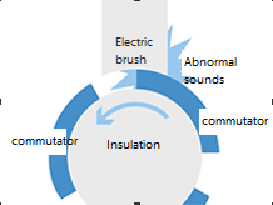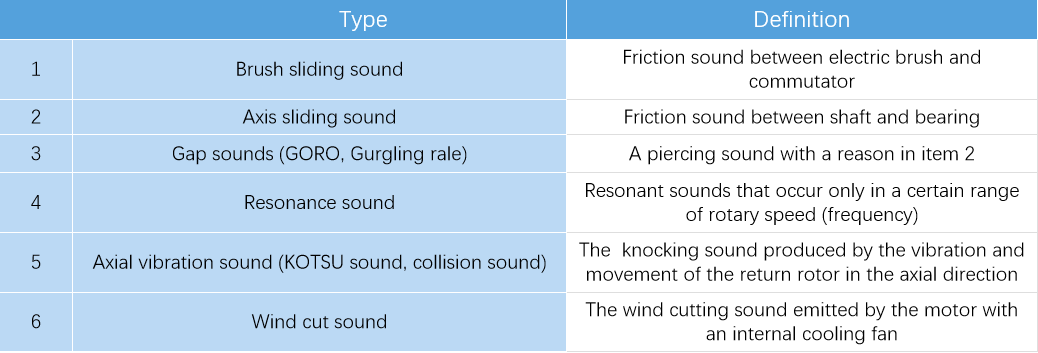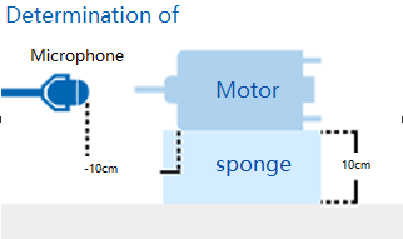Motor knowledge points
Posted in 2024-04-17 14:53:34 in Tech Blog, 0 Comments
Electrical noise
The main factors causing electrical noise
Electrical noise occurs
1. The motor continuously rotates through electrical rectification generated by brushes and commutators. That is to say, sparks generated when the reverse flow of current produces high voltage are also the main cause of electrical noise.
2. When the motor starts to rotate from the stopped state, although the current is transitional, it is still larger than the normal state, which makes the electrical noise louder.
3. Caused by unstable follow-up or overload current at the sliding contact area between the commutator and the brush.
4. An insulating film is formed on the sliding surface of the commutator and the brush, thus causing unstable electrical contact.
Countermeasures to reduce electrical noise
In order to reduce electrical noise, capacitors and retardation coils can be installed at the motor terminals. Generally, the method that can effectively eliminate the spark voltage is to install it near the source of the occurrence of the return rotor, which has a high cost performance.
1. Components that can eliminate noise can be installed inside the motor, such as installing ring rheostats (D/V), ring capacitors, rubber ring resistors (RRR), and chip capacitors. ⇒High frequency range noise is effective.
2. Components that can eliminate noise can be installed outside the motor, such as external capacitors (electrolytic type, ceramic type) and retardation coils. ⇒Effective for low frequency range noise.
3. As a countermeasure to reduce noise, there are methods such as using 1 or 2 separately, and methods that combine using 1 and 2 together, which has a greater effect.

Types of electrical noise
The interference noise of electromagnetic waves can be roughly divided into the following two types, which can be regarded as interference wave and noise measurement has to be carried out.
Sometimes the frequency range varies depending on the specification.

Mechanical noise
Types of mechanical noise
The above 3-6 are representative examples of abnormal sounds, and there are a variety of other noises that are judged as "harsh sounds".

Measurement of mechanical noise
The measurement of mechanical noise is to use a noise meter to physically detect the noise level (size of sound).
It is generally measured by frequency compensation (hearing compensation) known as "JIS-A characteristic", unit in dB(RMS).
In terms of measurement, the conditions that should be defined include voltage, revolution, load, side pressure, motor positioning status, microphone position, background noise, etc.

Mechanical noise: below 48dB (RMS)
Measure the JIS-A characteristic level at a distance of 10cm from the mounting surface on the output shaft side of the motor, with a voltage of 3V, no load, and the shaft in a horizontal position. The background noise must be below 26dB (RMS).
Considering Baolong Company?
Email us at:
sales@baolong.com
Or call us at:
+86 (0577) 62572888